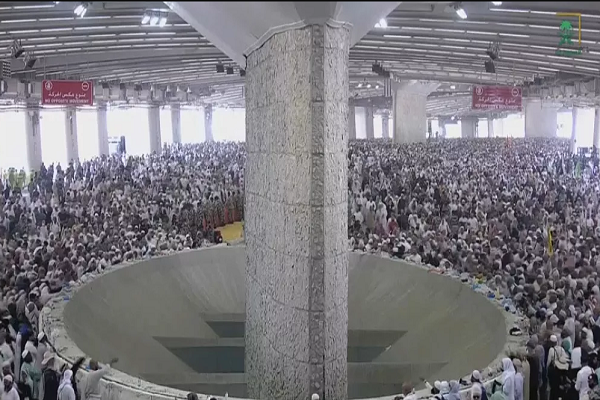AhlulBayt News Agency: The Rami al-Jamarat (Stoning of the Jamarat) is one of the rituals of Hajj that takes place twice during the pilgrimage.
The pilgrims perform the Rami al-Jamarat on Eid al-Adha and during the Days of Tashriq.
Rami is an Arabic word that means throwing and hurling. Jamarat is the plural of the word Jamarah, meaning small stones and pebbles.
In religious terms, Jamarat is a place in Mina, near Mecca, designated by three stone structures at which Hajj pilgrims throw stones. Each stone structure is called a Jamarah. The first of the three Jamarahs, known as Jamarah al-Ula, is closest to the Masjid al-Khayf, the second, Jamarah al-Wusta, is in the middle and the third, Jamarah al-Aqabah is the closest to Mecca.
The Rami al-Jamarat (Stoning of the Jamarat) is performed by pilgirms twice during the pilgrimage: on Eid al-Adha and during the Days of Tashriq.
According to Hadiths, the Jamarat represent Satan and the Rami al-Jamarat re-enacts what Abraham (AS) did. When he left Mina, Satan appeared to him at Jamarah al-Aqabah and Abraham made him go away by throwing seven stones at him. Then he appeared to him at the Jamarah al-Wusta. He pelted him with seven stones so that he disappeared from him. Then he appeared to him at the Jamarah al-Ula. Abraham pelted him with seven stones again and Satan withdrew from him.
Hajj pilgrims re-enact what Abraham (AS) did by throwing stones at symbols of Satan to suppress the devil within and not to follow Satan.
Some Quran interpreters have narrated this story when telling the story of sacrificing Ismail (AS), saying Satan was after temptation of Abraham against sacrificing Ismail but Abraham (AS) defeated Satan’s deceits by throwing stones at him.
Rami al-Jamarat was also part of Hajj during the Era of Jahilliya (before the advent of Islam), and there is even a poem by Abu Talib in which there is a reference to Rami al-Jamarat.
/129
The pilgrims perform the Rami al-Jamarat on Eid al-Adha and during the Days of Tashriq.
Rami is an Arabic word that means throwing and hurling. Jamarat is the plural of the word Jamarah, meaning small stones and pebbles.
In religious terms, Jamarat is a place in Mina, near Mecca, designated by three stone structures at which Hajj pilgrims throw stones. Each stone structure is called a Jamarah. The first of the three Jamarahs, known as Jamarah al-Ula, is closest to the Masjid al-Khayf, the second, Jamarah al-Wusta, is in the middle and the third, Jamarah al-Aqabah is the closest to Mecca.
The Rami al-Jamarat (Stoning of the Jamarat) is performed by pilgirms twice during the pilgrimage: on Eid al-Adha and during the Days of Tashriq.
According to Hadiths, the Jamarat represent Satan and the Rami al-Jamarat re-enacts what Abraham (AS) did. When he left Mina, Satan appeared to him at Jamarah al-Aqabah and Abraham made him go away by throwing seven stones at him. Then he appeared to him at the Jamarah al-Wusta. He pelted him with seven stones so that he disappeared from him. Then he appeared to him at the Jamarah al-Ula. Abraham pelted him with seven stones again and Satan withdrew from him.
Hajj pilgrims re-enact what Abraham (AS) did by throwing stones at symbols of Satan to suppress the devil within and not to follow Satan.
Some Quran interpreters have narrated this story when telling the story of sacrificing Ismail (AS), saying Satan was after temptation of Abraham against sacrificing Ismail but Abraham (AS) defeated Satan’s deceits by throwing stones at him.
Rami al-Jamarat was also part of Hajj during the Era of Jahilliya (before the advent of Islam), and there is even a poem by Abu Talib in which there is a reference to Rami al-Jamarat.
/129

